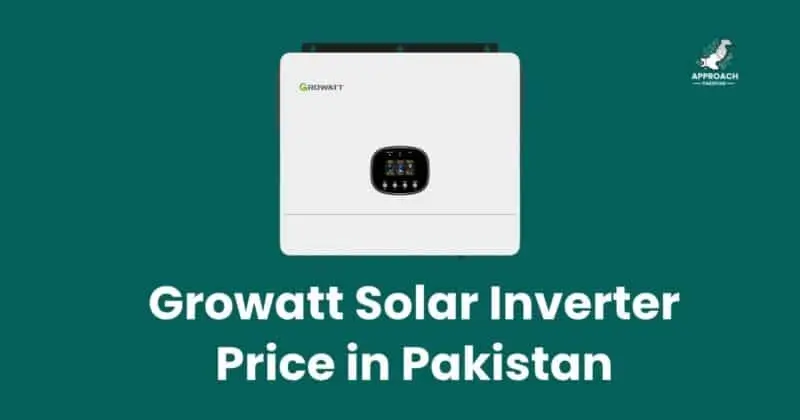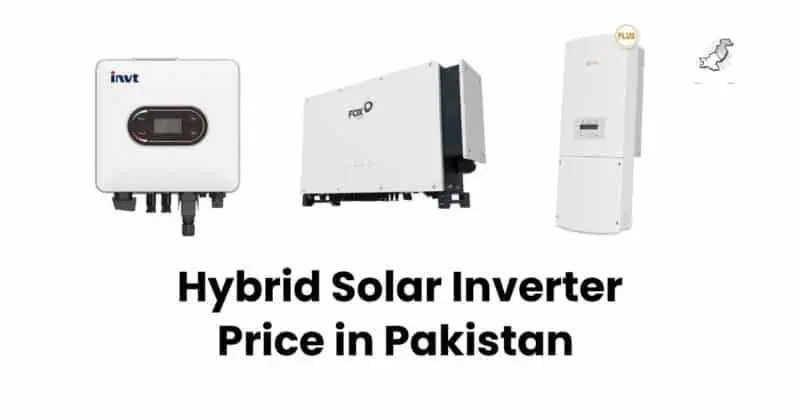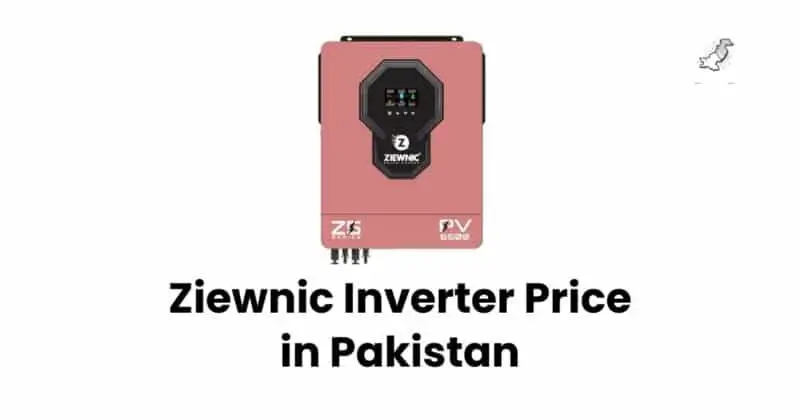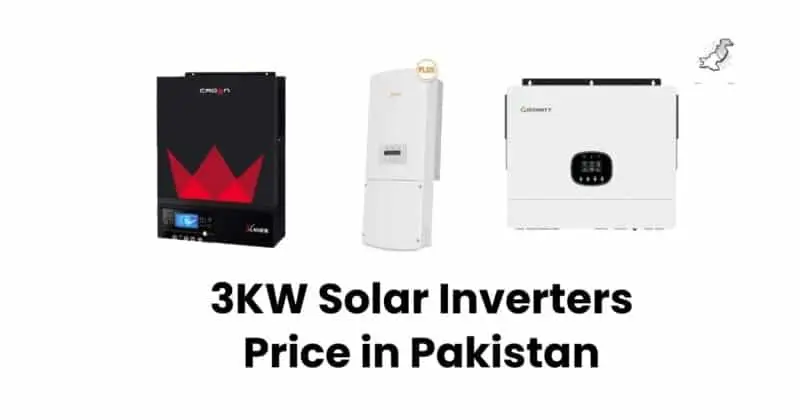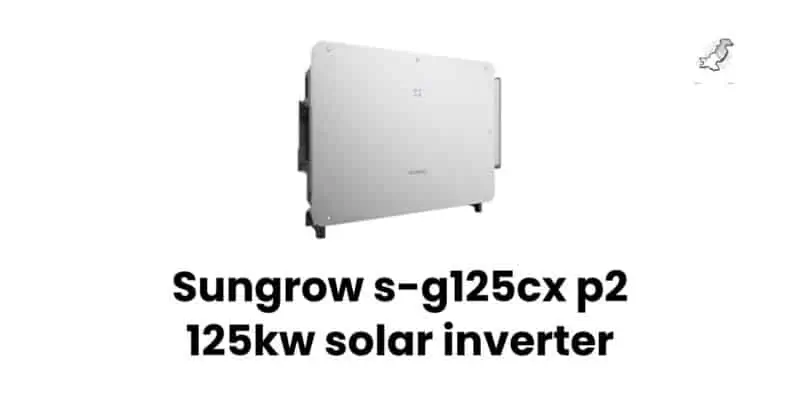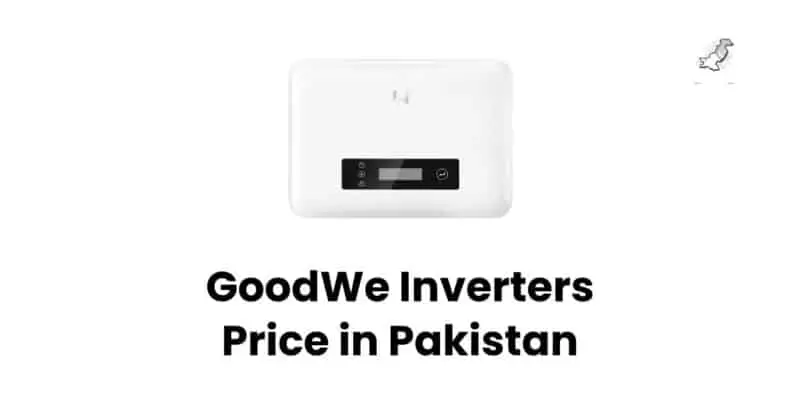1.5KW Solar Inverters Price in Pakistan 2025 – Complete Guide
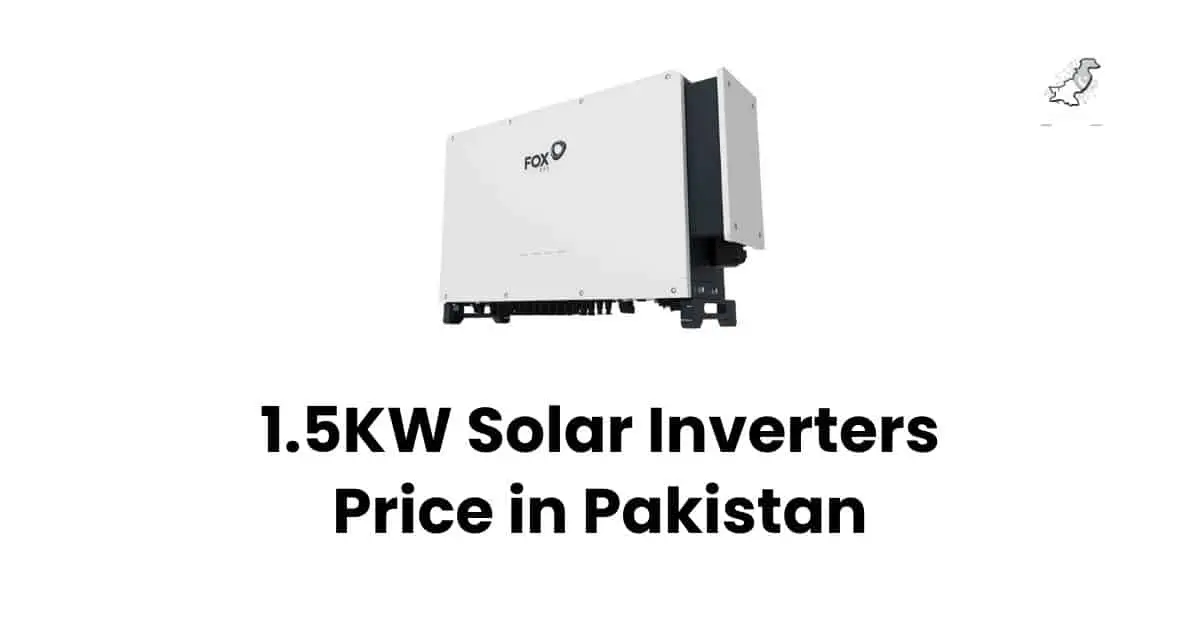
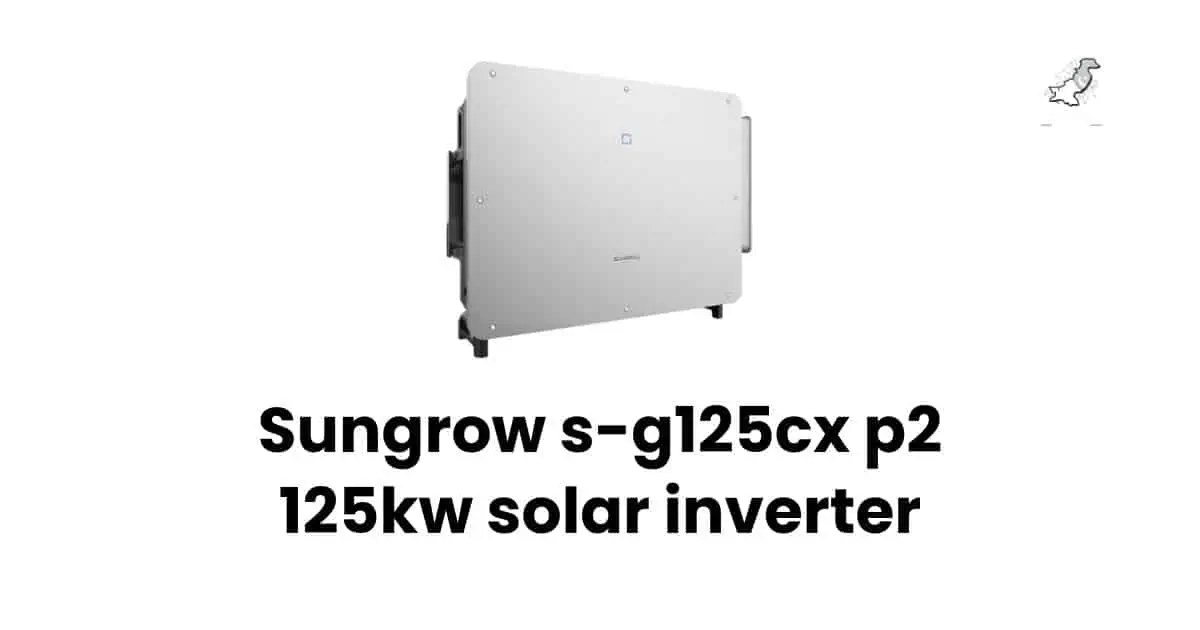
The price of 1.5KW solar inverters in Pakistan ranges from PKR 16,000 to PKR 55,000 in 2025. Budget options like Energy Direct start at PKR 16,000, while premium brands like SolarMax and Inverex cost PKR 35,000-55,000. The price depends on inverter type (on-grid, off-grid, hybrid), brand reputation, and technical features.
Introduction: Why 1.5KW Solar Inverters Are Perfect for Pakistani Homes
Your electricity bill just hit PKR 15,000 again this month. The load shedding schedule shows 8 hours of daily outages in your area. You’re tired of watching your monthly budget drain away while sitting in the dark.
Here’s the good news: a 1.5KW solar inverter can slash your electricity bills by 70-80% while giving you reliable backup power. It’s the perfect size for small to medium Pakistani homes running 2-4 fans, 6-8 LED lights, and basic appliances.
Rising Electricity Costs in Pakistan
Pakistan’s electricity rates jumped 40% in 2024 alone. The average household now pays PKR 12,000-18,000 monthly for basic power needs. That’s PKR 144,000-216,000 annually – enough to buy a complete solar system.
Load Shedding Solutions
Urban areas face 4-6 hours of daily load shedding. Rural regions endure up to 12 hours. A 1.5KW solar inverter with battery backup keeps your essential appliances running during these outages.
Cost-Effective Solar Transition
Starting with 1.5KW makes financial sense. You get immediate relief from high bills without a massive upfront investment. Most homeowners see payback within 18-24 months.
What is a 1.5KW Solar Inverter?
A 1.5KW solar inverter converts DC electricity from solar panels into AC electricity for home use. It can handle continuous loads up to 1,500 watts and surge loads up to 3,000 watts, making it ideal for small homes with 2-4 rooms.
Basic Functionality and Conversion Process
Think of your inverter as a translator. Solar panels speak “DC language” but your home appliances understand “AC language.” The inverter translates between them at 93-98% efficiency.
Your 1.5KW inverter processes enough power to run:
- Mobile chargers and small electronics
- 4 ceiling fans (240W)
- 8 LED lights (80W)
- 1 LED TV (100W)
- 1 refrigerator (150W)
Why 1.5KW Capacity Matters for Small Homes
Pakistani homes typically use 3-5 units daily. A 1.5KW system with 4-6 hours of peak sunlight generates 6-9 units daily. That covers most of your daytime needs and charges batteries for nighttime use.
Types of 1.5KW Solar Inverters Available in Pakistan
Pure Sine Wave vs Modified Sine Wave
Pure sine wave inverters cost PKR 5,000-8,000 more but protect sensitive electronics like computers, LED TVs, and modern refrigerators. Modified sine wave inverters work for basic loads but can damage expensive appliances.
Pure sine wave is the clear winner for home use. It eliminates buzzing sounds from fans, prevents LED flickering, and extends appliance life.
On-Grid 1.5KW Inverters
On-grid inverters connect directly to WAPDA’s grid. They shut down during power outages for safety but offer the fastest payback through net metering.
Price Range: PKR 25,000 – PKR 40,000
Popular models:
- Growatt 1.5KW On-Grid: PKR 28,000
- Huawei SUN2000-1.5KTL: PKR 35,000
- Solis 1.5KW Mini: PKR 32,000
Off-Grid 1.5KW Inverters
Off-grid systems work independently from WAPDA. They need battery banks but provide complete energy independence. Perfect for rural areas with unreliable grid connections.
Price Range: PKR 20,000 – PKR 45,000
Hybrid 1.5KW Solar Inverters
Hybrid inverters combine grid-tie and battery backup features. They’re the most versatile option, switching automatically between solar, grid, and battery power.
Price Range: PKR 35,000 – PKR 55,000
Direct Solar Inverters (Battery-Free)
Direct solar inverters run appliances directly from solar panels during daytime. No batteries needed, making them the most affordable option at PKR 16,000-25,000.
Energy Direct pioneered this technology in Pakistan. Their 1.5KW model costs just PKR 16,000 and works perfectly for daytime loads.
Top 1.5KW Solar Inverter Brands in Pakistan 2025
Technical Specifications Comparison
| Brand | Model | Type | Efficiency | MPPT | Battery | Price (PKR) |
| SolarMax | SM-R4-M II | Hybrid | 98% | Built-in | 24V | 35,000 |
| Energy Direct | VFD 1.5KW | Direct | 95% | Yes | None | 16,000 |
| Inverex | Veyron 1.2 | Hybrid | 96% | Built-in | 12V/24V | 45,000 |
| Growatt | MOD 1.5 | On-Grid | 97% | External | N/A | 28,000 |
| Marvel | Hybrid 1.5 | Hybrid | 94% | 60A | 12V | 28,000 |
| Xeon | Fronius 1.5 | Hybrid | 97% | Built-in | 12V | 55,000 |
Efficiency Ratings (93%-98%)
Higher efficiency means more power from your solar panels. Every 1% efficiency gain saves PKR 1,000-2,000 annually on a 1.5KW system.
SolarMax leads with 98% efficiency, followed by Growatt at 97%. Budget options typically offer 93-95% efficiency.
Battery Compatibility (12V/24V)
Most 1.5KW inverters work with 12V battery systems. Higher-end models support 24V for better efficiency and longer cable runs.
1.5KW Solar Inverter Pricing in Pakistan 2025
Price Range Analysis (PKR 16,000 – PKR 55,000)
| Price Category | Range (PKR) | Features | Best For |
| Budget | 16,000 – 25,000 | Basic features, direct solar | Small shops, basic homes |
| Mid-Range | 25,000 – 35,000 | Pure sine wave, MPPT | Most homes |
| Premium | 35,000 – 55,000 | Advanced features, long warranty | Quality-conscious buyers |
Budget vs Premium Options
Budget inverters save money upfront but may cost more long-term. Premium models offer better efficiency, longer warranties, and advanced features.
Budget Winner: Energy Direct VFD (PKR 16,000)
- Perfect for daytime-only operation
- No battery costs
- Quick 12-month payback
Premium Winner: SolarMax SM-R4-M II (PKR 35,000)
- German engineering quality
- 5-year comprehensive warranty
- 98% efficiency rating
Regional Price Variations
Karachi enjoys lowest prices due to port proximity. Lahore and Islamabad add PKR 2,000-3,000 for transportation. Northern areas see 10-15% higher prices.
Where to Buy at Best Prices
Authorized Dealers:
- Solar trading companies offer best prices
- Manufacturers provide warranty support
- Online marketplaces like Daraz offer convenience
Avoid:
- Roadside vendors with no warranty
- Suspiciously cheap “branded” inverters
- Sellers without proper documentation
Load Calculation: What Can 1.5KW Inverter Power?
A 1.5KW inverter handles continuous loads up to 1,200W safely, with surge capacity up to 3,000W for motor starting. This powers essential appliances for a 3-4 room house including fans, lights, TV, and small refrigerator.
Appliance Power Requirements
| Appliance | Power (Watts) | Quantity | Total (Watts) |
| Ceiling Fan | 60W | 4 | 240W |
| LED Light | 10W | 8 | 80W |
| LED TV | 100W | 1 | 100W |
| Refrigerator | 150W | 1 | 150W |
| Laptop Charger | 65W | 2 | 130W |
| Mobile Chargers | 15W | 4 | 60W |
| Total Continuous Load | 760W |
Sample Load Combinations
Combination 1: Basic Home (800W)
- 3 ceiling fans
- 6 LED lights
- 1 LED TV
- Mobile charging
Combination 2: Small Office (950W)
- 2 ceiling fans
- 8 LED lights
- 2 computers
- Printer (standby)
Combination 3: Rural Home (1,100W)
- 4 ceiling fans
- 10 LED lights
- 1 small refrigerator
- Water pump (periodic use)
Peak vs Continuous Load
Your inverter handles continuous loads 24/7 but provides surge power for motor starting. Refrigerator compressors and water pumps need 3-5x their running power for 2-3 seconds during startup.
Installation Guide for 1.5KW Solar Inverters
Pre-installation Requirements
Electrical Requirements:
- Dedicated circuit breaker
- Proper earthing system
- Surge protection devices
- Quality DC and AC cables
Physical Requirements:
- Ventilated installation area
- Away from direct sunlight
- Minimum 1-meter clearance
- Moisture-free environment
Safety Precautions
Solar installation involves high voltage DC electricity. Always hire qualified technicians for safety and warranty compliance.
Critical Safety Points:
- Never work on live circuits
- Use proper personal protective equipment
- Follow manufacturer wiring diagrams
- Test all connections before energizing
Battery Bank Setup
12V battery systems need 4-6 batteries for 1.5KW inverters. 24V systems require 8-12 batteries but offer better efficiency.
Recommended Battery Capacity:
- Maximum: 800Ah for 8-hour backup
- Minimum: 400Ah for 4-hour backup
- Optimal: 600Ah for 6-hour backup
Performance Optimization Tips
Maximizing Efficiency
Position solar panels facing south with 30-35° tilt angle. Clean panels monthly to maintain peak performance. Dust reduces output by 15-20% in Pakistani conditions.
Efficiency Boosters:
- Use MPPT charge controllers
- Minimize cable lengths
- Ensure proper ventilation
- Regular maintenance scheduling
Battery Management Best Practices
Proper battery care extends system life by 2-3 years. Never discharge below 50% capacity. Charge fully at least weekly.
Battery Care Tips:
- Check water levels monthly
- Clean terminals quarterly
- Equalize charging monthly
- Monitor specific gravity
Seasonal Performance Considerations
Summer provides peak solar generation but higher temperatures reduce efficiency. Winter offers cooler operation but shorter daylight hours.
Monsoon Season Preparation:
- Waterproof all connections
- Check drainage systems
- Inspect mounting hardware
- Plan for reduced generation
Common Problems and Troubleshooting
Low Battery Alarm Solutions
Cause: Battery voltage drops below 11V (12V system) or 22V (24V system) Solution: Reduce load or charge batteries from grid/generator
Prevention:
- Monitor battery voltage daily
- Set appropriate low voltage cutoff
- Size battery bank properly
Overload Protection Issues
Cause: Connected load exceeds inverter capacity Solution: Disconnect non-essential appliances
Common Overload Triggers:
- Starting multiple motors simultaneously
- Faulty appliances drawing excess current
- Wrong inverter sizing for load requirements
Display Error Codes
Most modern inverters show error codes on LCD displays. Common codes include:
- E01: Short circuit protection
- E02: Low battery voltage
- E03: Overload condition
- E04: Over temperature

